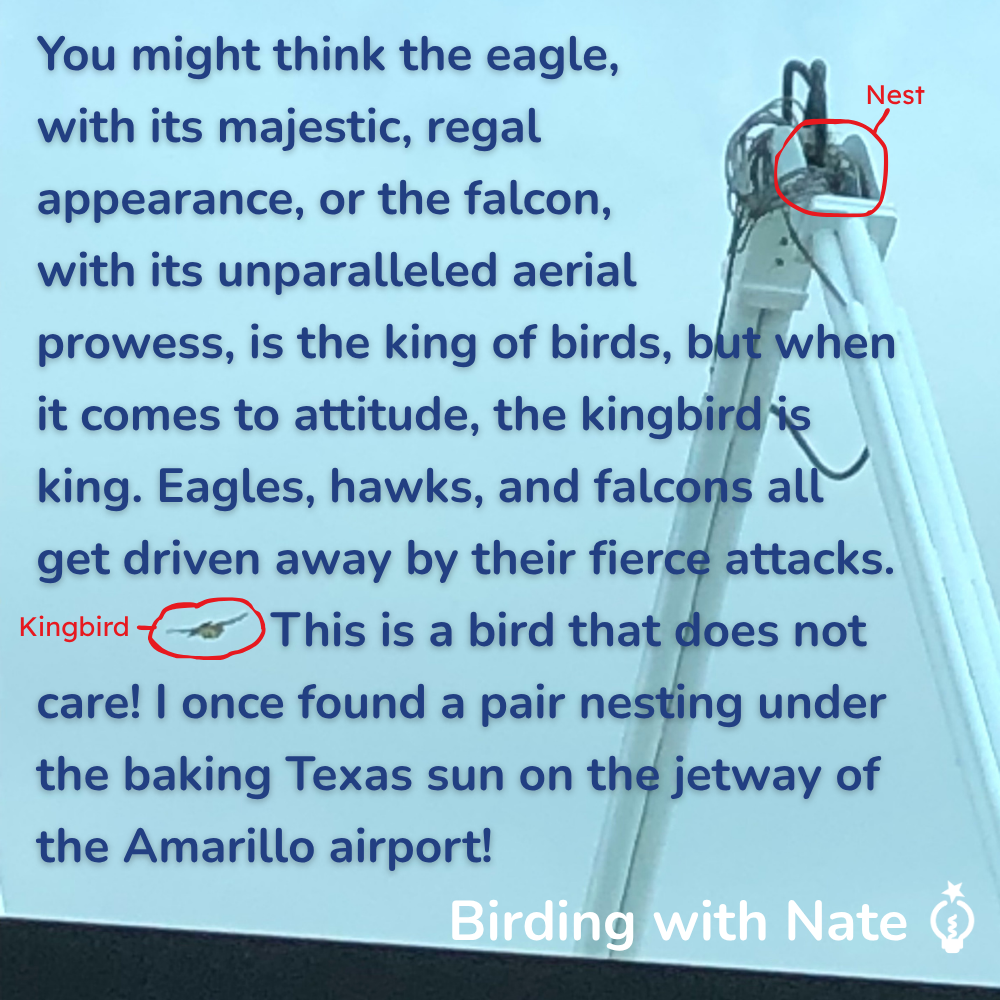Birding with Nate — June Bird of the Month: Western Kingbird
Birding with Nate
June Bird of the Month: Western Kingbird
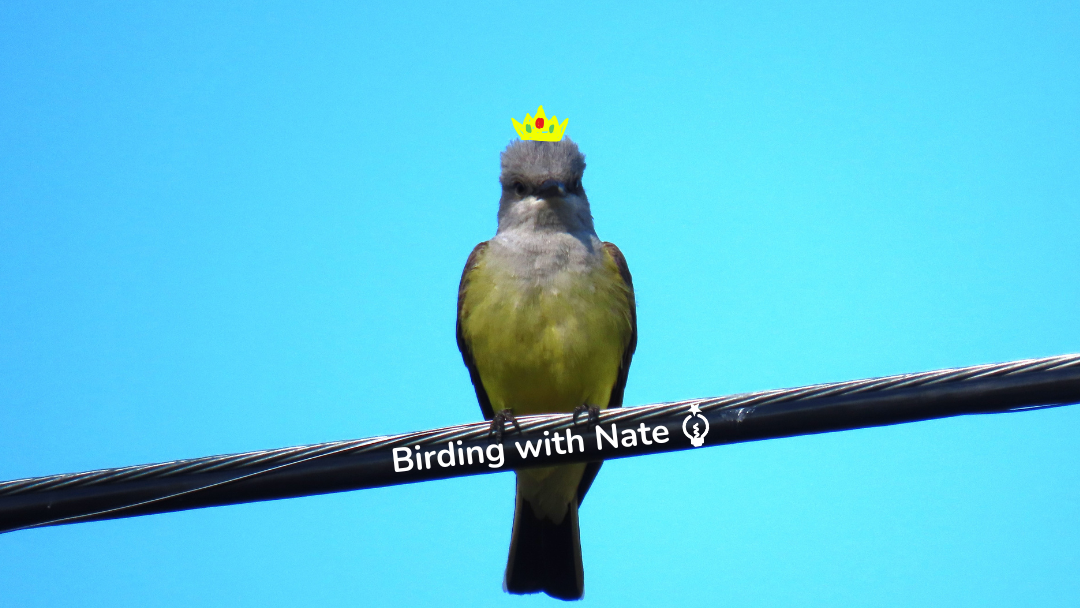
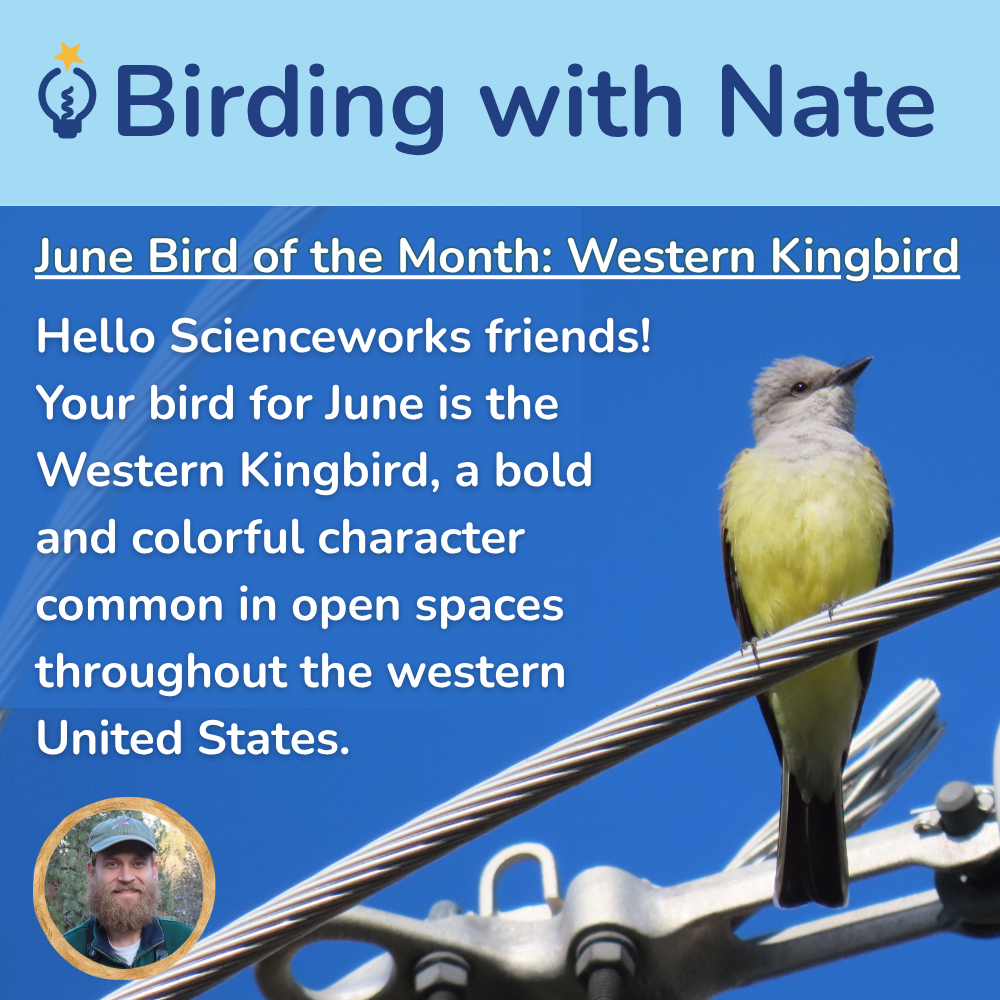
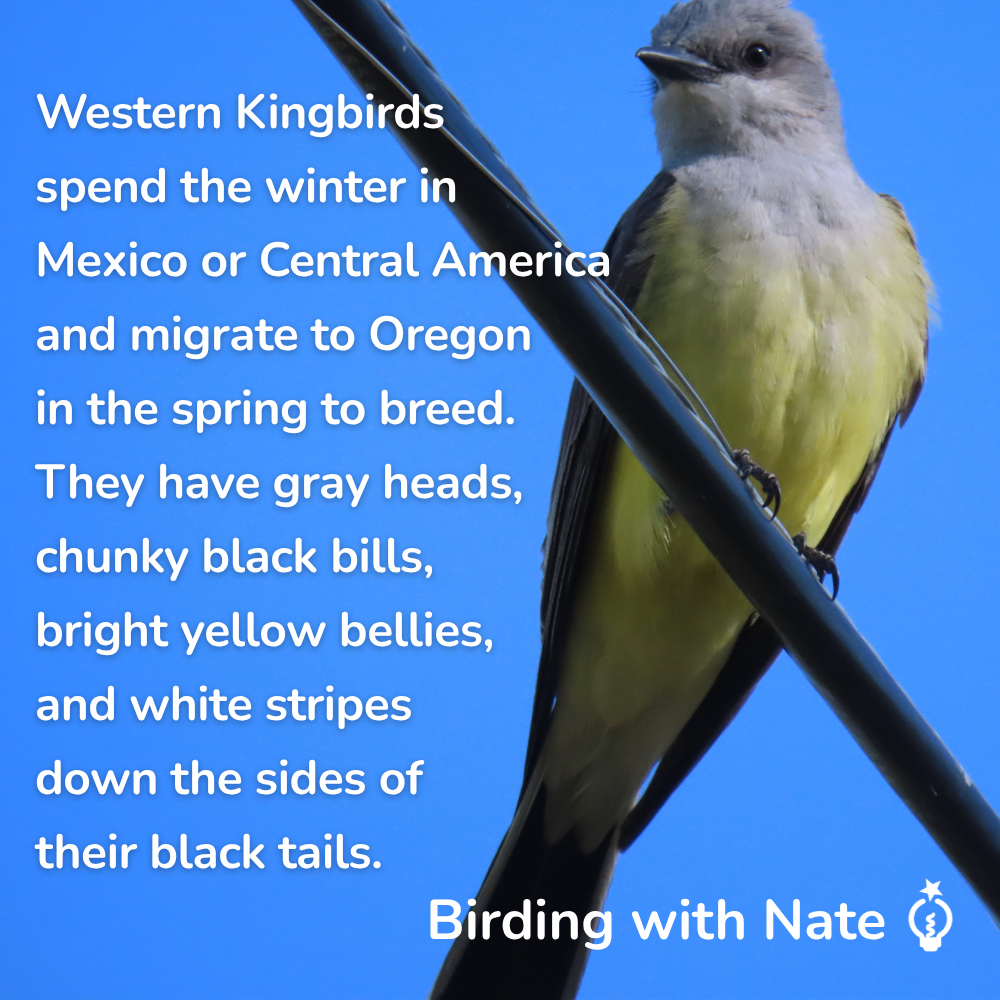
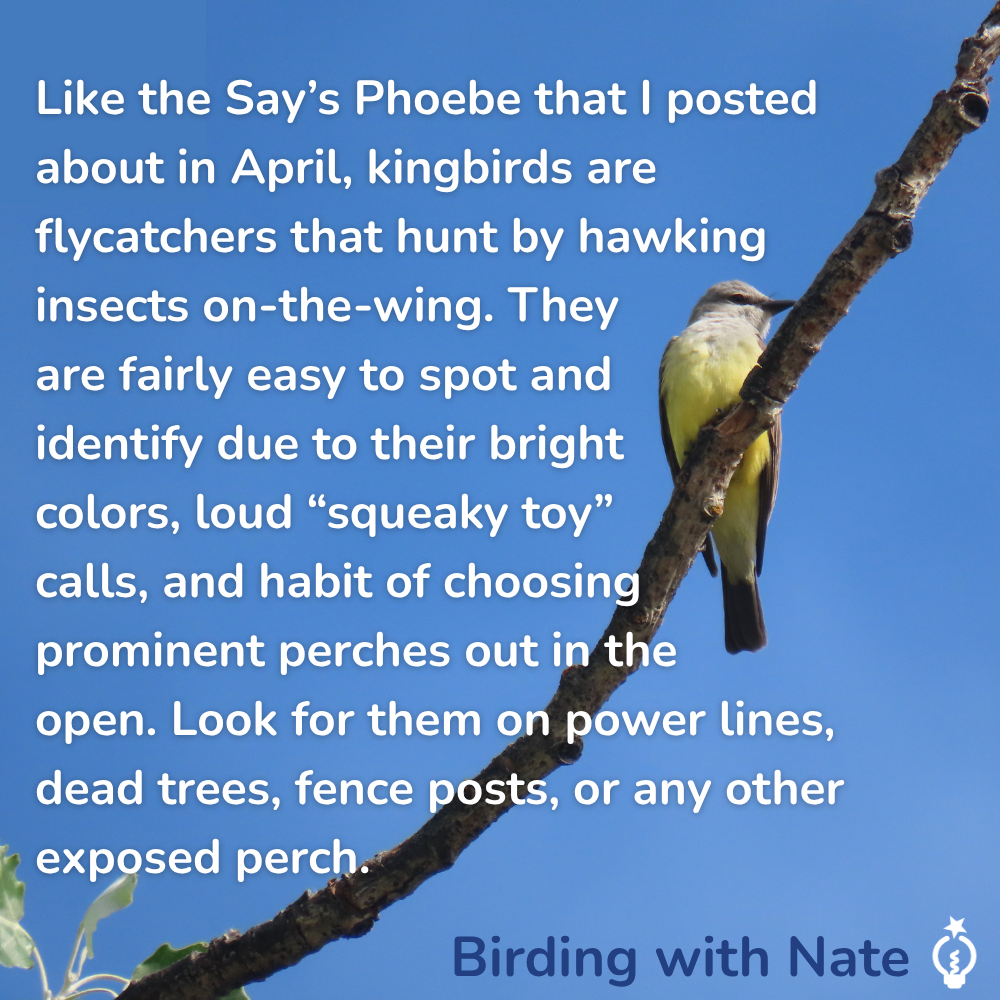

Slide 1
Hello ScienceWorks friends! Your bird for June is the Western Kingbird, a bold and colorful character common in open spaces throughout the western United States.
Slide 2
Western Kingbirds spend the winter in Mexico or Central America and migrate to Oregon in the spring to breed. They have gray heads, chunky black bills, bright yellow bellies, and white stripes down the sides of their black tails.
Slide 3
Like the Say’s Phoebe that I posted about in April, kingbirds are flycatchers that hunt by hawking insects on-the-wing. They are fairly easy to spot and identify due to their bright colors, loud “squeaky toy” calls, and habit of choosing prominent perches out in the open. Look for them on power lines, dead trees, fence posts, or any other exposed perch.
Slide 4
Kingbirds are in the family Tyrannidae, also know as the tyrant flycatchers. Why all the kingly names? Tyrant flycatchers are named for their habit of chasing and harassing any and all other birds — and kingbirds are the most tyrannical of them all.
Slide 5
You might think the eagle, with its majestic, regal appearance, or the falcon, with its unparalleled aerial prowess, is the king of birds, but when it comes to attitude, the kingbird is king. Eagles, hawks, and falcons all get driven away by their fierce attacks. This is a bird that does not care! I once found a pair nesting under the baking Texas sun on the jetway of the Amarillo airport!
Slide 6
Unfortunately, this bird’s bold nature and lack of fear of nesting near human infrastructure can get them into trouble. I’m sad to report that I found one of these birds dead, hanging from a string or fishing line on a powerline at ScienceWorks. A sobering reminder that human trash can, and does, harm wildlife — and a call to appreciate the beautiful creatures we share Oregon with. Next month we’ll feature another charming creature for you all to enjoy.
Happy Birding!
And don't forget to add your own bird sightings to the
ScienceWorks eBird Hotspot!





